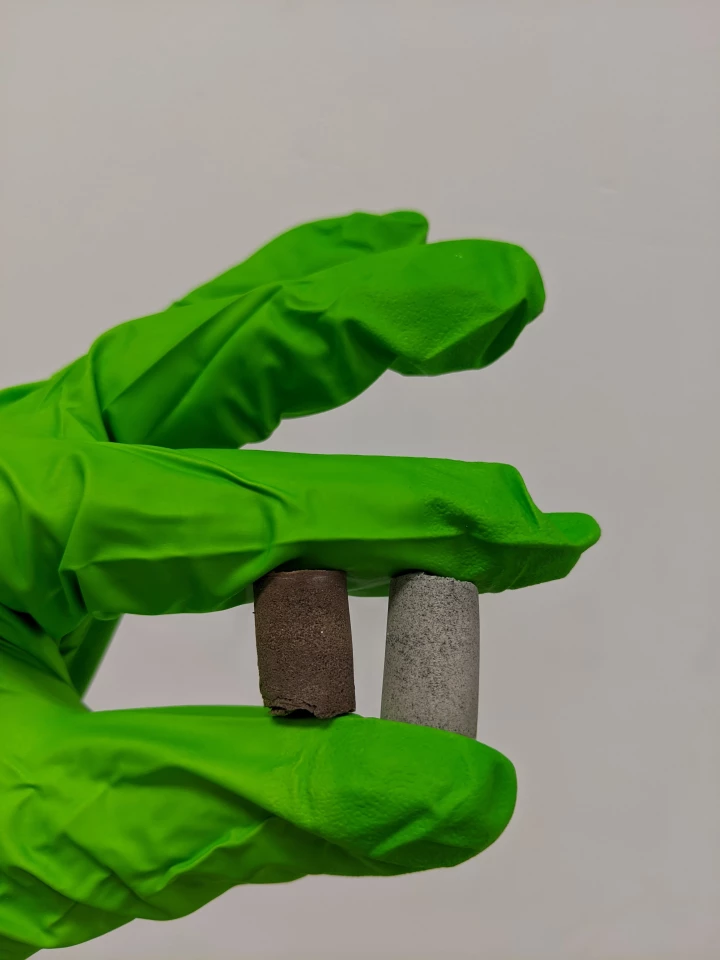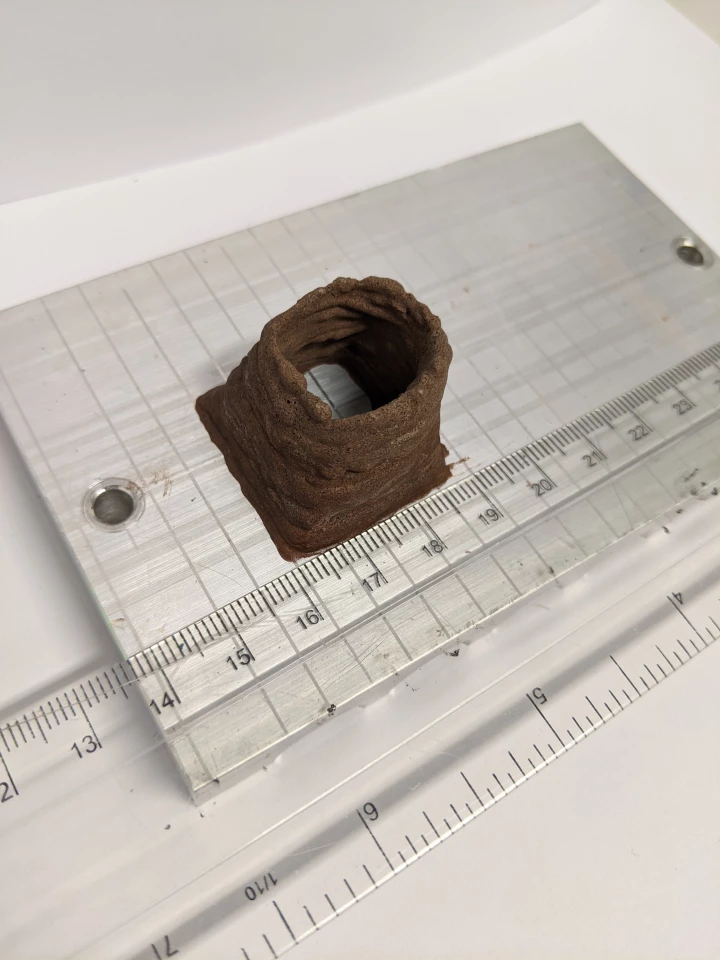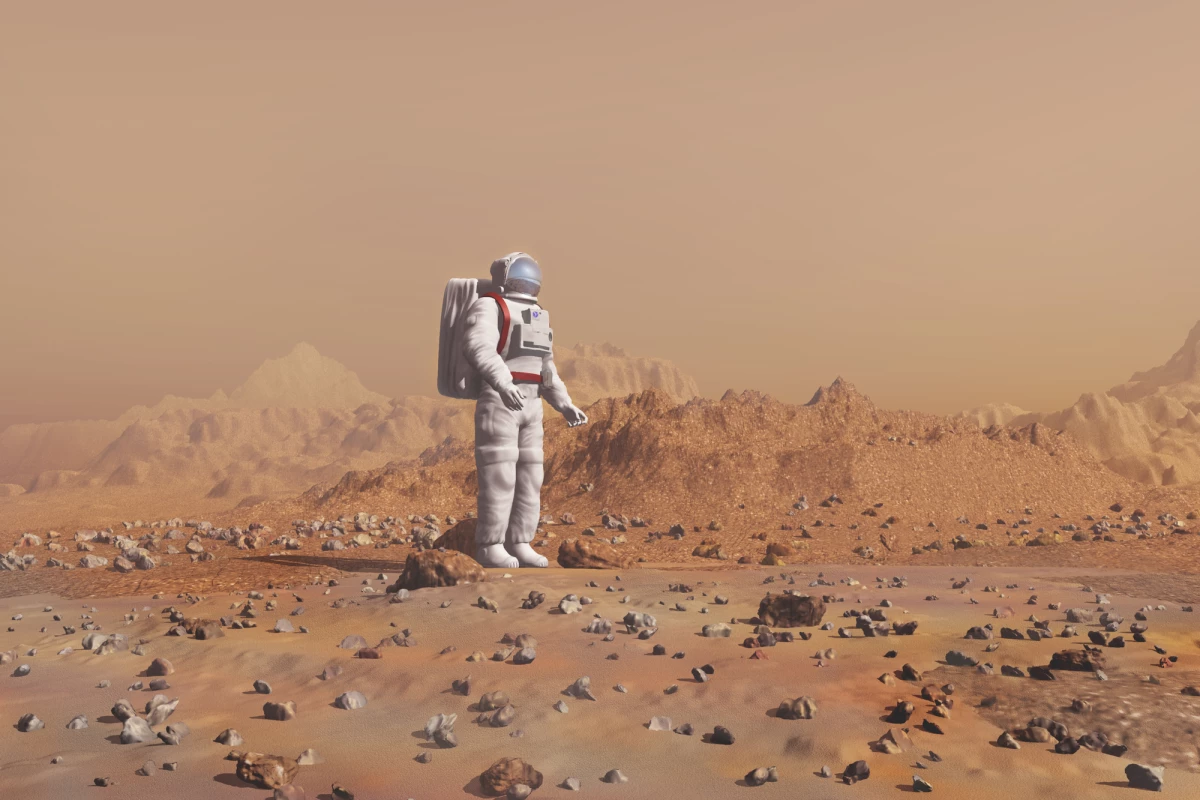By casting one eye to a past where ancient buildings were held together with animal blood, and one eye to a future where humans use Martian soil for on-site construction, scientists have cooked up a new recipe for cost effective "cosmic concrete." Groups of astronauts in space could produce hundreds of kilograms of the material each year, according to the scientists, continually expanding a potential Martian habitat with every visit.
The new building material was developed by scientists at the University of Manchester, who drew inspiration from ancient construction methods that involved mixing animal blood into mortar to act as the binding material. Pig blood and lime mortar was one of the more notable mixes, in which the blood regulated the growth of calcium carbonate crystal, with one study even describing this as "one of the most important technological inventions in the Chinese architectural history."
“It is exciting that a major challenge of the space age may have found its solution based on inspirations from medieval technology,” says author of the new study, Dr Aled Roberts.
More recently, scientists have been busy exploring the question of how habitats might be constructed during future Mars or lunar missions. Loading spacecraft up with bricks or bags of cement would be prohibitively expensive, so this field of research involves investigating how these structures can be made out of the materials that are already there, with the soils of the Moon and Mars a prime target.
Some interesting studies in this area have shown how these soils can be mixed with other ingredients and fashioned into flexible building blocks, bricks that are stronger than reinforced concrete or some that even generate electricity. Alternatively, Martian soil is thought to contain metals that could be extracted and melted down to form key parts of a shelter.
In space engineering circles, this is known as in-situ resource utilization, and the University of Manchester scientists have gotten creative in considering exactly what resources future explorers will have on hand. Working with simulated lunar and Martian soils, the team experimented with using human blood and waste products as binding material, and turned up some interesting results.

The work showed that a common protein in the blood called serum albumin could be used as a binder to produce a concrete-like material with compressive strength comparable to ordinary concrete. In investigating the mechanisms at play, the team found the blood proteins "curdle" to form "beta sheets" that extend outward to hold the material together.
Even more interestingly, the team found that urea, a waste product found in urine, sweat and tears, could be incorporated to increase this compressive strength by more than 300 percent. That is to say, the key to cosmic concrete stronger than what we have here on Earth might be found in our blood, sweat and tears (and urine).

According to the team's calculations, a crew of six astronauts on a two-year Mars mission could produce more than 500 kg (1,100 lb) of AstroCrete, as the material has been called. Used in combination with sandbags or bricks made of soil, the scientists say that each crew member could produce enough AstroCrete to expand the habitat by enough to accommodate one more person, effectively doubling the shelter space with each mission.
"Scientists have been trying to develop viable technologies to produce concrete-like materials on the surface of Mars, but we never stopped to think that the answer might be inside us all along," says Dr Aled Roberts.
The research was published in the journal Materials Today Bio.
Source: University of Manchester






